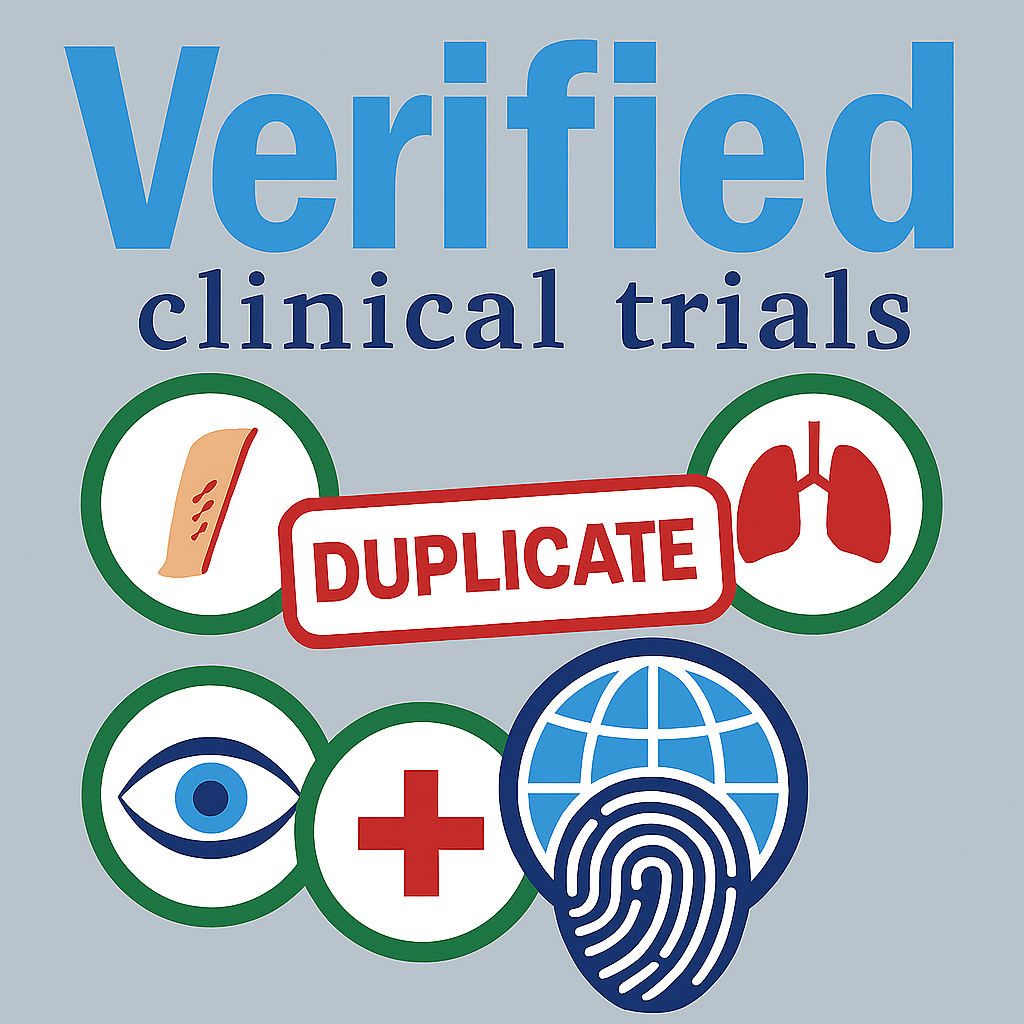Studies in clinical research show that duplicate or professional trial participants—individuals enrolling in multiple studies simultaneously—are far more common than many sponsors realize. Rates as high as 10% have been reported in therapeutic areas beyond psychiatry, including dermatology, ophthalmology, respiratory, and others. Each duplicate research subject can skew efficacy, safety, and overall trial integrity.
The data: duplication is real across specialties
While awareness often centers on CNS or behavioral trials, other areas are equally vulnerable:
- Ophthalmology & Dermatology
Trials in high-demand conditions—like atopic dermatitis, psoriasis, glaucoma, and AMD—attract motivated participants who may juggle multiple studies.
Clinicaltrials.gov lists hundreds of such interventional dermatology and ophthalmology trials. - Respiratory (asthma, COPD, allergy)
Overlapping inclusion criteria across studies make dupes easier. Biomedtracker data identifies respiratory trials as a high-risk category.Verified Clinical Trials - Not limited to dermatology, ophthalmology, or respiratory—duplication is widespread across GLP‑1, cardiovascular, infectious disease, and more. Verified Clinical Trials has seen it in every major area. Verified Clinical Trials
Even with conservative estimates, studies have identified duplicates in the range of 5–8%, often rising above 10% in some phases or therapeutic areas.
💰 The stakes: money, time, and safety at risk
Duplicate participants damage clinical trials in critical ways:
- Efficacy distortion – Repeat enrollees skew endpoint signals.
- Safety blindspots – Adverse events or washout periods may be hidden.
- Operational pressure – Mid-study red flags force re-consents, statistical reviews, and delays.
- Recruitment inefficiency – Sponsors must recruit more participants to restore power.
Each duplicate can cost tens of thousands of dollars. When duplicates slip into multiple-arm safety or placebo groups, true endpoints get muddied, extending timelines and ballooning budgets.
🌍 The solution: global, real-time screening at pre‑screening
There is only one effective solution: a global, cross-sponsor duplicate-detection network, integrated at the time of prescreening, before dosing even begins.
Enter Verified Clinical Trials: a centralized subject registry and biometric verification system that:
- Screens every prescreen against a global subject database in real time.
- Flags duplicates instantly, using partial identifiers and biometrics.
- Protects data integrity by removing risky, unreliably consented subjects before randomization.
This proactive approach ensures only genuine, first-time subjects are enrolled—saving months and millions across program timelines.clinicaltrials.gov
📌 ClinicalTrials.gov & external validation
ClinicalTrials.gov lists thousands of interventional studies in dermatology, ophthalmology, and respiratory disease—underscoring how high-traffic these areas are, and how vulnerable to duplication. See, for example, the large numbers of active and recruiting trials in atopic dermatitis, macular degeneration, and COPD. clinicaltrials.gov
🔗 Further reading
- How to avoid the dangers of duplicate participants in clinical trials: Clinical Trial Vanguard executive interview
https://www.clinicaltrialvanguard.com/executiveinterviews/how‑to‑avoid‑the‑dangers‑of‑duplicate‑participants‑in‑clinical‑trials/ - Preventing duplicate & professional research subjects … how Verified Clinical Trials safeguards data integrity and subject safety: Pharmiweb article
https://pharmiweb.com/article/preventing‑duplicate‑and‑professional‑research‑subjects‑in‑clinical‑trials‑how‑verified‑clinical‑trials‑safeguards‑data‑integrity‑and‑subject‑safety
✅ Conclusion: stop duplicates before they start
Whether you run a dermatology, ophthalmology, respiratory, or any other trial:
- Duplication is a hidden threat—often at rates above 5–10%.
- The only reliable defense is real-time pre-screen screening, across sponsors, sites, and borders.
- Verified Clinical Trials is the global solution you need—ensuring subject safety, data integrity, and ROI on every enrollment.
Protect your next study. Contact Verified Clinical Trials today to set up global duplicate-detection at prescreening.
About Verified Clinical Trials (VCT)
VCT maintains the world’s largest decentralized research-subject registry. Through biometric and identity verification, we protect clinical trials from duplicate/professional participants—empowering sponsors and CROs to run cleaner, safer, more efficient studies across all therapeutic areas.

